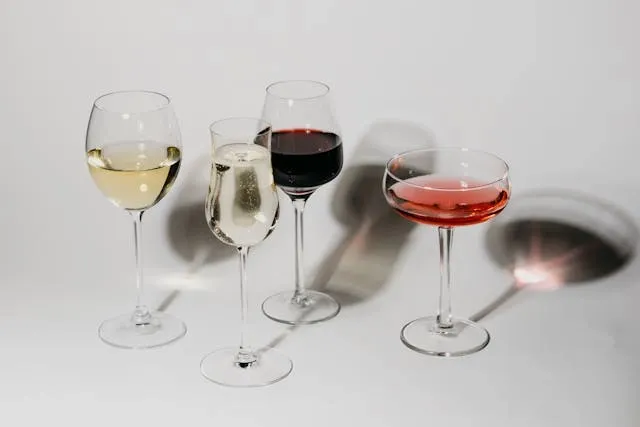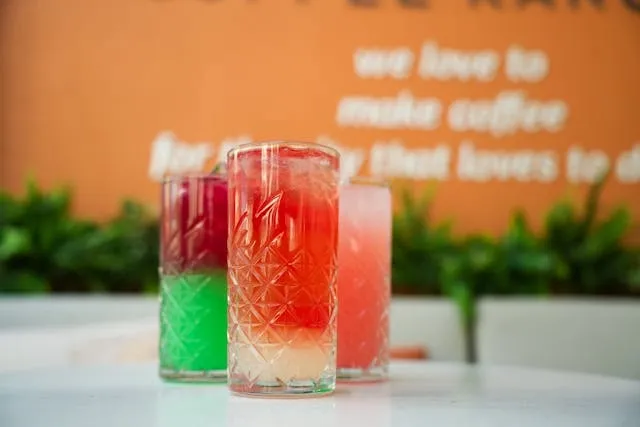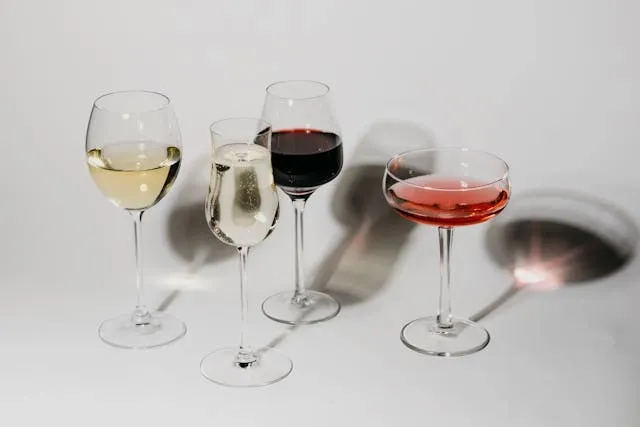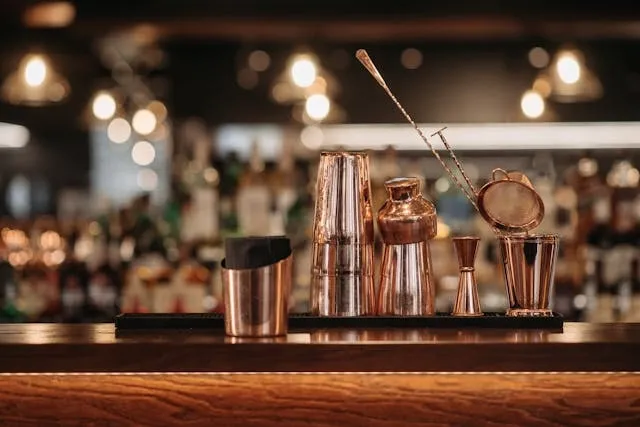What Is Barware? Meaning, Types, Categories, Tools, And Glassware
When people ask what barware is, they are referring to the collection of tools, accessories, and glasses used to prepare and serve drinks. Barware covers everything from cocktail shakers and strainers to martini glasses and whiskey tumblers.
In this guide, we explain barware in detail, including its meaning, categories, types of bar glasses, materials, and care. Understanding barware is essential for anyone working in hospitality, bartending, or simply hosting at home. Read on to expand your knowledge.

Key Takeaways
- Barware includes glasses, tools, and accessories for mixing and serving drinks - preparation equipment, serving glassware, and decorative extras.
- Bar glass sizes and shapes affect drink strength and presentation, and there are differences between home barware and commercial alternatives.
- Materials matter, so you will need to look at options like stainless steel, crystal, copper, plastic, and more to find the right barware for your needs.
- We supply custom coasters in a wide range of shapes, sizes, and materials, and you can personalize them with your own designs.
Table of contents
-
What Is Barware?
-
What Are The Different Types Of Barware?
-
What’s The Best Material For Barware?
-
How Has Barware Evolved Over Time?
-
What Are The Different Types Of Bar Glasses?
-
What Are Standard Bar Glass Sizes And Guides?
-
What Is Commercial Barware?
-
How Do Bartenders Choose The Right Barware?
-
How To Care For And Maintain Barware
-
How Does Barware Impact Cocktail Presentation?
What Is Barware?
At its core, barware is the collective term for everything used to prepare, serve, and enjoy drinks. From cocktail shakers to wine glasses, barware enhances hospitality and elevates drinking culture.
Asking what barware is highlights how important these tools are for efficiency and presentation. In practice, barware includes:
- Preparation tools: Things like muddlers and jiggers.
- Serving vessels: Highball and martini glasses, among others.
- Decorative pieces: Examples include coasters and stirrers.
Bartenders and hosts rely on different types of barware to ensure accuracy, style, and enjoyment. Understanding barware glass types and their names is particularly important - each glass enhances the flavor and aroma of specific drinks.
From whiskey tumblers to elegant flutes, and even custom drink coasters, barware reflects tradition and modern innovation. Ultimately, barware is about combining functionality and beauty to create memorable drinking experiences.

What Is Barware In Hospitality?
In the hospitality industry, barware represents both practicality and customer satisfaction. Bars, restaurants, and hotels depend on high-quality barware glasses types and tools to maintain service standards.
Customers expect the right glass with their drink, whether it’s a chilled martini glass or a sturdy pint. Using the correct barware glass types leaves a lasting impression by enhancing:
- Presentation
- Aroma
- Flavor
Hospitality professionals also view barware as a tool for their bar branding ideas and themes - signature glassware can become iconic for a venue. Beyond glasses, tools like shakers, strainers, and bar spoons ensure consistency and speed in service.
Studies suggest that modern cocktails emphasize innovation to evolve traditional cocktails, and barware is central to this. A bartending glassware chart is often used to strain staff on standard bar glass sizes and functions, connecting aesthetics, functionality, and customer experience.
What Are The Different Types Of Barware?
When exploring types of barware, it’s clear there is more to it than glasses. You have a range of preparation tools and serving essentials, as well as accessories and decor to consider. Let’s look at these in a little detail:
- Preparation tools: Shakers, jiggers, strainers, and muddlers are all used for mixing cocktails.
- Serving essentials: Different kinds of bar glasses, each designed for specific drinks. There are highballs for mixed cocktails, lowballs for spirits, flutes for champagne, etc.
- Accessories and decor: This involves coasters, stir sticks, and napkins that enhance presentation.
Each type of barware matters because it directly impacts the way a drink looks and tastes. With a standard bar glass size chart, you can see how volume influences alcohol balance and presentation. By understanding types of barware glasses and their names, both professionals and enthusiasts can complete their bar setups.
Use our custom coaster printing service to complete your barware set, adding stylish custom coasters in a range of different materials and sizes - perfect for entertaining.
Looking for custom coasters for your bar?
Work with us to create custom bar coasters that match your style or brand in any material.
What’s The Best Material For Barware?
Choosing the right material is vital when selecting barware. Stainless steel remains a firm favorite for shakers, jiggers, and strainers as it is durable, easy to clean and resistant to rust. But let’s look at some alternatives:
- Copper. This is a common choice for specialty items like Moscow Mule mugs, adding aesthetic flair but requiring extra care to prevent tarnish.
- Crystal and glass: These dominate barware glasses types like Lord Shooter etched shot glasses, offering elegance and clarity that highlight cocktails beautifully.
- Plastic: Though less glamorous, this is practical for outdoor or high-traffic events where breakage is a concern.
Each material influences style, longevity, and customer perception. For example, crystal stemware conveys sophistication, while stainless steel communicates professionalism. Comparing bar glassware types by material helps determine the right choice for different occasions.
In our experience, stainless steel shakers are the easiest to maintain in a bustling bar environment. Copper, for example, requires frequent polishing, which can be time consuming.

How Has Barware Evolved Over Time?
The story of barware stretches back thousands of years, evolving alongside human culture and hospitality. Ancient civilizations relied on clay cups and goblets, while medieval Europe favored ornate chalices.
With the invention of glassblowing, crystal and glass designs began to dominate drinking culture, paving the way for modern elegance. Over time, specialized barware glass types emerged, including:
- Flutes for champagne
- Martini glasses for cocktails
- Rocks glasses for whiskey
Bartending innovations in the 19th century, like the cocktail shaker, forever changed mixology and presentation. According to research, cocktails began using stronger flavors like juices and syrups during the U.S. prohibition, leading to more tools for textures and infusions.
Today, barware reflects both tradition and innovation, with stainless steel, crystal, and even eco-friendly materials shaping collections. Contemporary barware is a result of history and modern creativity.
Create beer coasters to protect bar surfaces
With our custom beer coasters, you enjoy effective surface protection and stylish aesthetics.
Learn moreWhat Are The Different Types Of Bar Glasses?
Whiskey tumblers are a popular bar glass type, showcasing spirits while allowing aroma concentration. Bar glasses form one of the most important categories within barware. Different types of bar glasses exist because each shape enhances the drinking experience.
Let’s look at some other types:
- Martini glasses: These highlight presentation and balance.
- Highballs: The perfect glassware for mixed cocktails that require more liquid and ice.
- Champagne flutes: Excellent for maintaining carbonation.
- Wine glasses: Available in various shapes, these enhance aroma profiles.
Research shows that glass size is not fixed, even within countries, as they are often tailored to specific drinks. Nevertheless, learning about types of barware glasses helps bartenders and hosts deliver the right drink in the right vessel.
A bar glassware guide or bartending glassware chart is an excellent reference tool, outlining standard and non-standard glass sizes and uses.
How Does Glass Shape Affect Aroma Dispersion?
The shape of a glass influences how aromas reach the nose, which affects taste perception in turn. Sensory science suggests that the majority of flavor comes from atoms, so here’s how glass design controls this:
- Narrow openings: These trap bubbles and funnel aromas toward the nose, helping preserve delicate floral notes.
- Wide bowls: By increasing surface area, these allow more oxygen to interact with the drink, softening harsher notes.
- Straight-sided glasses: This design reduces aroma concentration, so they are ideal for long mixed drinks where refreshment is the primary focus.
Studies have found that glass shape significantly changes the concentration of aromatic compounds near the glass rim, altering how the drinker perceives sweetness, bitterness, and freshness.
What Are Standard Bar Glass Sizes And Guides?
A rocks glass, perfect for whiskey or spirits on ice, usually holds 6-10 ounces. Standard bar glass sizes play a crucial role in consistency, cocktail strength, and presentation. Though studies have found that businesses have discretion over the glasses they use, there are some fairly standard glass sizes:
- Highball glasses: These range from 8-12 ounces, suited for mixed drinks.
- Martini glasses: Common measurements are around 6-8 ounces.
- Wine glasses: These vary widely depending on red or white.
Bartenders often use a bar glassware chart to reference these measurements quickly. Understanding different bar glassware types and their sizes helps maintain balance in cocktails, ensuring they are never over- or under-poured.
These sizes also control dilution and presentation, both essential for professional service. For home enthusiasts, referencing a standard bar glass sizes chart makes setting up a bar easier, ensuring consistency in taste and a polished look.
|
Glass Type |
Standard Size (oz) |
Best For |
Why It Matters |
|
Highball |
8–12 oz |
Mixed cocktails (gin & tonic, rum & coke) |
Taller shape holds ice + mixer, keeps drinks refreshing. |
|
Lowball / Rocks |
6–10 oz |
Spirits neat, whiskey on the rocks, short cocktails |
Wide rim enhances aroma; sturdy build balances stronger drinks. |
|
Martini / Cocktail |
6–8 oz |
Martinis, Manhattans |
A wide bowl enhances aroma, stem prevents hand heat from warming the drink. |
|
Wine |
6–14 oz |
Red or white wines |
A larger bowl allows oxygenation, releasing aromas. A smaller bowl keeps wine cooler, preserving crisp flavors. |
|
Champagne Flute |
6–8 oz |
Champagne, sparkling wine |
The narrow shape maintains bubbles and focuses delicate aromas. |
Need a bulk quantity of custom coasters for your bar?
With our service, you can enjoy wholesale discounts on custom bar coasters in bulk for affordable protection.
What Is Commercial Barware?
Commercial barware refers to tools, glasses, and accessories specifically designed for restaurants, hotels, and bars. Unlike home barware, commercial barware emphasizes durability, cost-effectiveness, and professional standards.
Commercial barware must endure heavy use, frequent cleaning, and high turnover without losing quality. Common features include:
- Stainless steel construction
- Reinforced glassware
- Stackable designs
Commercial barware glass types include pint glasses, highballs, and durable wine glasses, chosen to balance style and practicality. A bar glassware chart is often used to train staff on different types of bar glasses and standard sizes.
The quality of commercial barware plays a key role in how much it costs to open a bar. Some equipment prioritizes aesthetics, but commercial options must also emphasize speed, durability, and safety.
For business owners, investing in the right type of barware ensures smooth operations and satisfied customers.
How Do Bartenders Choose The Right Barware?
Bartenders rely on practical considerations when selecting barware. The right tools and glasses must balance speed, comfort, and style. A look at recent bar trends points to an increase in experiential and themed venues, so barware needs to fit into this too.
For efficiency, bar owners can improve workflow with things like:
- Ergonomically designed shakers
- Lightweight jiggers
- Balanced bar spoons
Glassware choices depend on menu focus. While tiki bars might use specialty mugs, wine-focused venues are more likely to rely on stemware. Using the correct types of barware glasses enhances flavor and presentation, ensuring cocktails are served as intended.
A bartending glassware chart helps professionals memorize standard bar glass sizes and their purposes, reinforcing consistency. Bartenders also consider branding - unique bar glass types or custom stainless steel stir sticks can help make a bar instantly recognizable.
Ultimately, barware selection is about finding the balance between durability, aesthetics, and efficiency.
Customize your own beer mats for promotional or aesthetic purposes
With our service, you can get beer mats in any style and design you need for your bar.
Get startedHow To Care For And Maintain Barware
Proper care extends the life of barware, whether in hospitality settings or home use. For example, fragile glassware should be hand-washed with warm water and mild detergent, while sturdier barware glass types may be dishwasher-safe.
Let’s look at other maintenance tips for barware:
- Metal tools: Things like shakers and strainers should be dried immediately to prevent tarnish or rust.
- Scratches and chips: These compromise both aesthetics and hygiene, so it is important to handle tools with care.
- Storage: Glasses should be stored upright or hung by the stem, while tools should be kept organized in caddies or rolls.
You should also look into how to clean bar mats and coasters for comprehensive maintenance practices - different materials require different types of care. By properly taking care of barware, bartenders and hosts preserve both functionality and presentation.

How Does Barware Impact Cocktail Presentation?
Barware is more than just functional - it directly influences cocktail presentation. For example, the shape, clarity, and shine of different types of bar glasses affect how a drink looks and is perceived.
A martini presented in the proper glass has an elegant feel, while champagne served in flutes enhances bubbles and sophistication. Modern bartenders understand that unique barware glass types can create Instagram-worthy visuals, especially when combined with custom cocktail coasters.
A polished set of barware glass types complements cocktails but also communicates professionalism. Coasters, garnishes, and glassware all work together to elevate the experience. Presentation also impacts taste perception - drinks look fresher and more refined in the right vessel.
Ultimately, barware transforms cocktails into art, reinforcing why it is essential for bartenders and hosts to understand bar glassware types in particular.
Frequently Asked Questions About What Is Barware
What Is Barware Meaning?
Barware refers to all the tools, glasses, and accessories used to prepare, serve, and enjoy drinks. It includes everything from cocktail shakers to different types of bar glasses, ensuring consistency and style.
What Are The Types Of Barware?
The main types of barware include preparation tools (shakers, jiggers, strainers), serving glassware (wine glasses, martini glasses, highballs), and accessories (coasters, stirrers, napkins). A bar glassware chart helps identify standard bar glass sizes and uses.